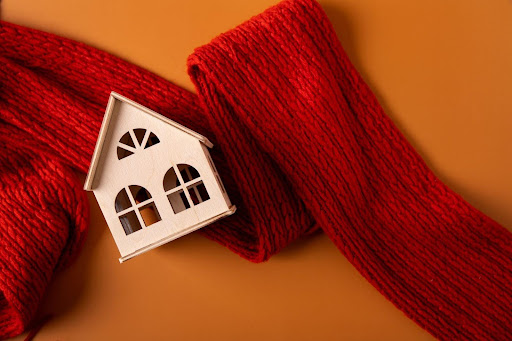It’s that in-between season again. The one where the pumpkins are still on the porch, but your breath fogs the glass when you stand too close. You try to hold off turning on the heat, convincing yourself a sweater will do. But every night, the air feels heavier, colder. And suddenly your home, the same one that felt cozy in October, starts to feel like it’s quietly working against you.
This is the slow slide from fall to winter, the time when your windows stop being background scenery and start revealing their flaws.
If you’ve ever felt a phantom draft at 2 a.m. or watched your energy bill jump before December even hits, you’re not imagining things. Your windows are the problem. Not your thermostat. Not your furnace. Those beautiful panes of glass are quietly leaking warmth and money into the cold.
And the worst part? They’ve been doing it for years.
The Moment It Hits
Every year, there’s a moment when the season turns on you. Maybe it’s the first frost on the windshield. Maybe it’s when you step barefoot onto the hardwood and realize the floor feels like ice. Whatever the trigger, that’s when you remember: your windows aren’t as sealed as you thought.
This isn’t just about comfort…it’s about energy. Once the temperature drops below zero, every crack, gap, and warped seal becomes a portal for cold air to pour in. Meanwhile, your heating system works overtime, trying to fill a bucket with a hole in it.
If your house feels drafty no matter how high you crank the heat, it’s not the weather’s fault. It’s your home quietly bleeding warmth through every uninsulated edge.
Why Most Homes Fail the Fall-to-Winter Test
Fall is the season that exposes bad design. During summer, your AC masks it. During winter, you blame the cold. But in November, the truth shows up.
Windows are supposed to protect, but old or poorly insulated ones act like thin plastic barriers. Double panes lose their edge when the seal fails. Frames shrink with age. Air finds its way in.
Architecturally, this is the trade-off of modern homes: big windows, natural light, open floor plans. It’s all beautiful until you’re sitting on your couch in December wearing socks, slippers, and a blanket just to watch TV.
Insulation That Doesn’t Ruin Your Aesthetic
When people think “insulating windows,” they picture plastic film, foggy glass, and tape lines that scream DIY panic. But that’s outdated thinking. Modern insulation can actually elevate your home’s design.
The goal isn’t to hide your windows, it’s to make them perform.
Layered window treatments, for instance, are functional and stylish. Think velvet drapes, linen sheers, and thermal liners that feel intentional, not improvised. Even minimalist homes can play with texture: wool-blend curtains, honeycomb blinds, Roman shades. These don’t just block cold air, they add depth, character, and warmth to a space that suddenly feels alive again.
For practical upgrades that blend efficiency with design, check out this guide on how to insulate windows for winter. It covers real solutions that actually work, not quick fixes that peel off by February.
The Thermostat Lie We All Believe
Here’s the trap everyone falls into: thinking you can heat your way out of a draft. You can’t.
Cranking up the thermostat doesn’t fix poor insulation; it just hides the symptoms while your energy bill skyrockets. A home with properly insulated windows stays consistently warm because the heat isn’t leaking out faster than your furnace can produce it.
Think of insulation like emotional boundaries for your house. It’s not about shutting everything out, it’s about keeping what matters in.
Texture, Tone, and Thermal Strategy
When the season shifts, so should your interiors. The easiest way to insulate your space without touching a tube of caulk? Texture.
Interior designers use texture to make rooms feel warm long before the thermostat kicks in. Heavy drapery, layered rugs, woven throws, all of it traps heat and softens light. The result is psychological and physical comfort.
Try pairing natural tones with heavy fabrics: flax-colored linen curtains with wool blankets, or terracotta accents against dark woods. It’s an aesthetic that says “winter ready” without looking like a snow lodge.
The Fall Energy Audit Nobody Talks About
By late November, the outside world feels muted. The leaves are gone, the light shifts blue, and everything slows down. That’s the perfect time to notice how your house actually feels.
Do you hear wind sneaking through the frames? Do your curtains move when the window’s closed? Does the temperature drop five degrees the second you leave the kitchen? That’s not ambience—that’s inefficiency.
Insulating your windows before the deep freeze hits isn’t glamorous, but it’s satisfying in the most adult way possible. It’s taking control before winter takes over.
Comfort Has a Quiet Kind of ROI
Here’s the thing about insulation: nobody will compliment you on it, but you’ll feel it every day. The house will be quieter. The heat will linger longer. Your mornings will feel calmer because you’re not jolted awake by that first blast of cold air.
The ROI isn’t flashy, but it’s real. Lower bills, longer-lasting windows, a home that feels balanced instead of brittle. That’s design that works.
It’s easy to get caught up in the visual side of interiors, but the real luxury is living in a space that feels like it’s looking out for you.
When “Old House Charm” Becomes a Liability
We romanticize old homes: the creaky floors, the deep sills, the original glass. But nostalgia doesn’t keep you warm. If your windows are still single-pane, they’re not charming. They’re energy liabilities.
Upgrading or insulating doesn’t mean losing character. You can preserve the look and fix the function. Weatherstripping, interior inserts, or even low-profile storm panels can transform your space while keeping your design intact.
This is where heritage meets intelligence.
Why Now Is the Moment
November is the month of almost. Almost winter. Almost holidays. Almost too late to fix what you ignored all year.
This is the sweet spot for insulation, before the real cold hits, when you can still make meaningful changes. Wait until January, and you’ll be reacting instead of preparing.
A warm home starts with intention. You can buy all the cozy candles you want, but if your windows are leaking cold air, you’re basically scenting the problem, not solving it.
The Final Thought
Every year, we pretend winter sneaks up on us. But it doesn’t. It gives us weeks of warning, the dimming light, the dry air, the quiet draft whispering that your home isn’t as sealed as you thought.
You can ignore it, or you can fix it. Because no one wants to spend December arguing with their thermostat.
Insulate your windows. Keep your heat. Enjoy your home.
Because when winter finally hits, comfort shouldn’t feel like a luxury. It should feel like the baseline.







